No Products in the Cart
Cleaning and preening is what the Mothers® Detail Guide is all about. From the simplest tasks to the most technically challenging, our Guide covers it all.
Posted on May 7, 2021

The needs of your automotive interior are numerous and varied. Special care must be taken with each surface and material to ensure its quality and longevity. After all, this is where you have the most contact with your vehicle. Carpets and shaggy material require more than just vacuuming – their dirt is ground in, and special cleaners might be necessary to extract that grime. Dashboard, console and seating surfaces made of leather, vinyl or fabric touch your clothes and skin, and must be maintained to preserve their comfort and longevity. Dust gets into everything. Meanwhile, all those plastic parts aren’t invulnerable – their ongoing function means you should detail them the right way.
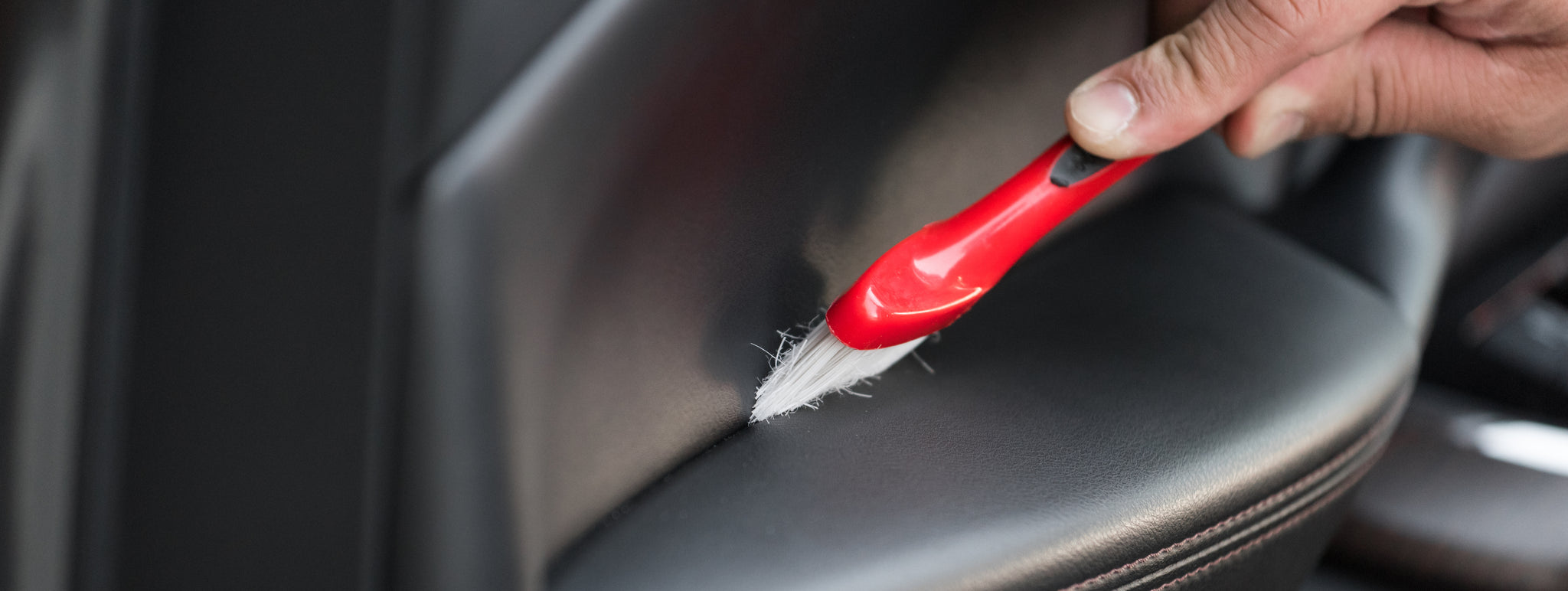
Dust tends to stick if it’s left sitting for too long. Use soft bristle brushes of various sizes to loosen clingy dirt and make it easier to remove. Your vacuum’s crevice tool will make short work of hard-to-reach nooks and crannies.

Brushing and vacuuming are essential elements of cleaning your auto interior, so you probably ought to start with it. Vacuum everywhere – seats, dash, floor, vents, cargo area – but before you begin, brush. Brushing is an essential prelude to flossing… err, vacuuming. Select a brush like Mothers® Detail Brush or the Carpet & Upholstery Brush, and use it to loosen dust in vents, crevices between panels, around switchgear, in fabric and carpeting, and chase it all with the vacuum.
For carpets and fabrics that need more than vacuuming, specialized cleaning agents are available. The purpose of carpet and upholstery cleaners is to loosen dirt that’s bonded with the carpet and fabric fibers – the cleaners act like a release agent. Use is simple and straightforward. First, apply the cleaner directly to surface.
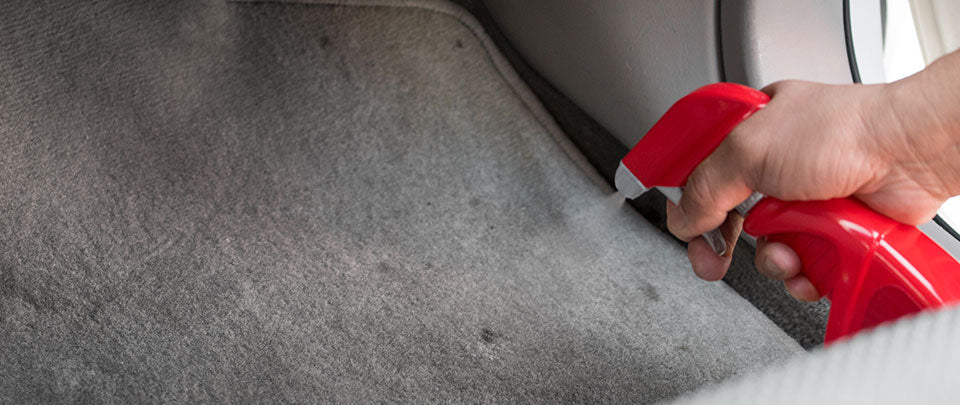
After applying the cleaner, work the area briskly with a terry towel, microfiber towel or brush and vary the direction of agitation (when a material is dirty, its fibers are dirty on all sides, so you need to rub from all sides). Automotive carpeting frequently requires multiple treatments – there’s a lot of dirt in those rugs. Be careful with detail work in fabrics and upholstery, and be gentle when necessary. Brushes like Mothers® Carpet & Upholstery Brush work for this sort of agitation: you can use this firm carpet brush (stiffer than the average brush) before and after the cleaner is applied.
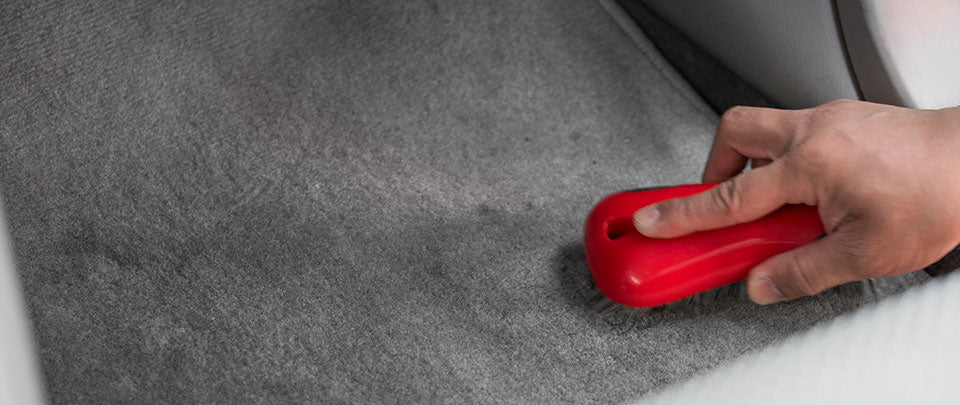
Repetition is the key to success when cleaning stained carpet. Count on several treatments of carpet cleaner, rubbing with a clean towel and/or brushing between applications. The grime in the fabric or carpet took years to get there, and will take some time to remove.
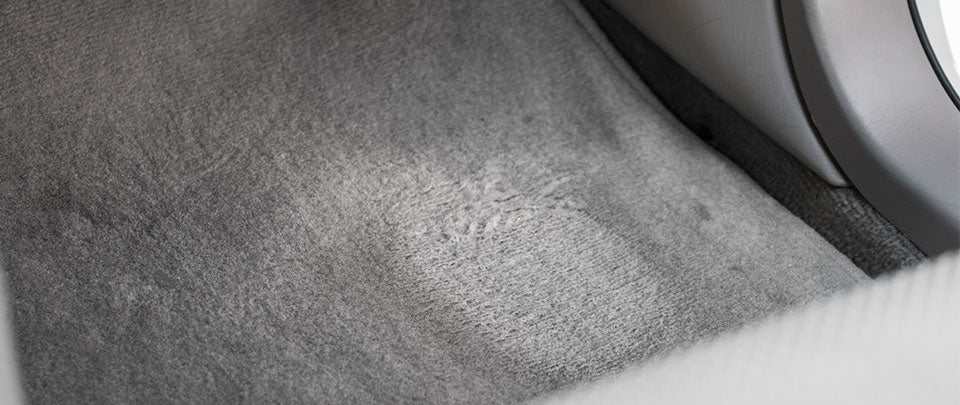
When working with a cleaning product on carpeting or interior fabrics, be sure you’re using a cleaner that’s appropriate for your upholstered/carpeted/fabric surfaces. Chemicals that are too aggressive will damage material and fibers: use a gentle cleaner more liberally instead of a powerful cleaner a little at a time. Mothers® Carpet & Upholstery Cleaner has been tested on hundreds of materials, and is formulated for this exact sort of use with automotive surfaces. Don’t be reluctant to re-treat any portions of material that won’t come clean—several attacks are better than one battle.
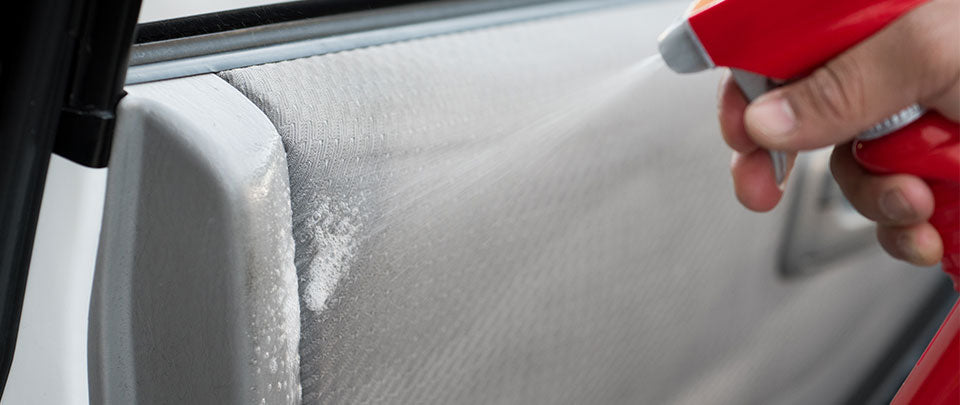
Remember, automotive interiors get dirty over time, and discoloration is consistent for entire areas. If you go after dirt or a stain in one location, that area can wind up being cleaner/lighter than the surrounding material. Be prepared to clean large sections so interior coloration is as even as possible.
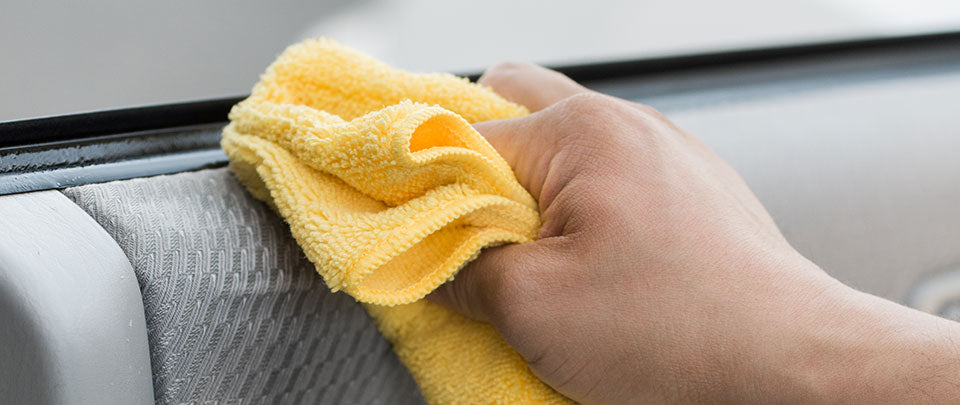
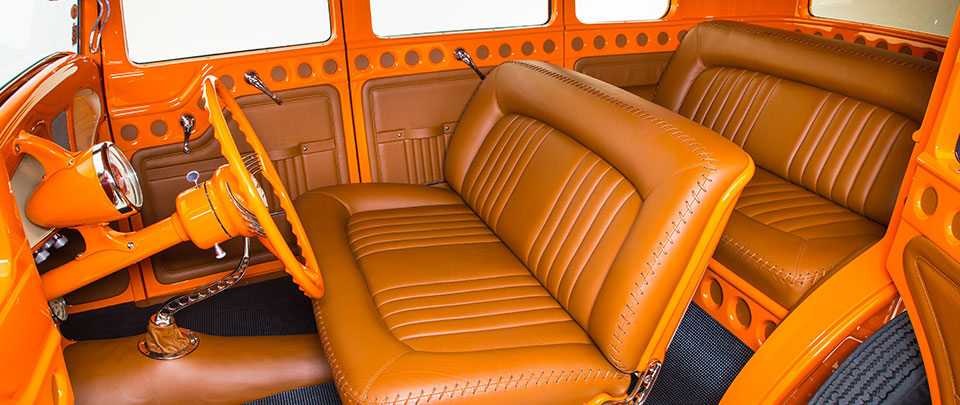
Leather has a long history of use in automobiles, and though Mothers® can’t offer much advice on the maintenance of leather suspension or brake parts, we’re experts on the care and feeding of interior leather surfaces. Automakers use natural materials like leather (as well as wood and fabrics, covered elsewhere in this guide) to make the interior feel more comfortable and luxurious. If you expect to maintain that comfortable relationship with your interior, the animal skins within it should be cared for as intently as you would your own.
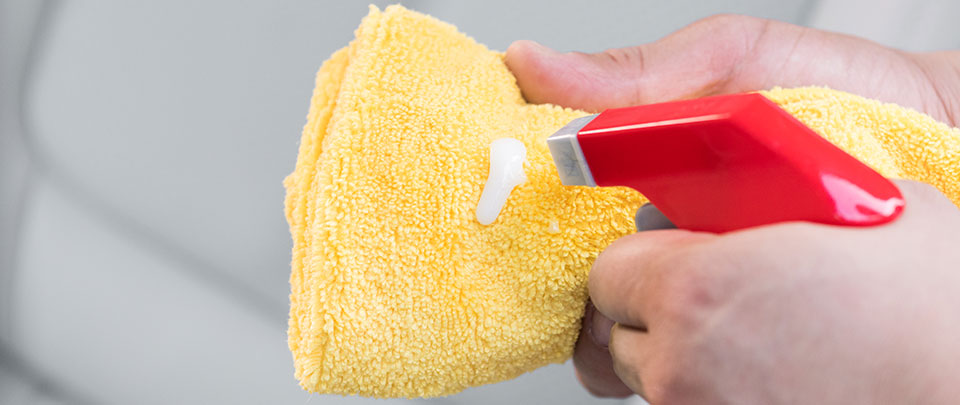
Regular Conditioning
Though you may think of cleaning first when detailing your vehicle, if you’re detailing leather, conditioning is a more consistent requirement than cleaning. Leather’s unique durability depends on its natural strength, but the environment it’s subjected to when used in a vehicle is a tough neighborhood, ie; heat, sunlight, mobs of UV rays beaming all over the place beating things up. Leather needs its natural oils and preservatives replenished regularly for that durability to persist. A high-quality conditioner or cleaner-conditioner combo can do that.
Using a cotton or microfiber towel or an applicator, work conditioner into leather with gentle circular motions, section-by-section, being sure to rub the conditioner into seams and folds in the leather surfaces. Before the conditioner dries, buff it out with a similar towel. Repeat as necessary – the “many attacks work better than one battle” theory applies here. Be sure to seek out a conditioner that not only contains the oils that keep leather supple, but has the pH-balanced natural preservatives to help it stay that way.
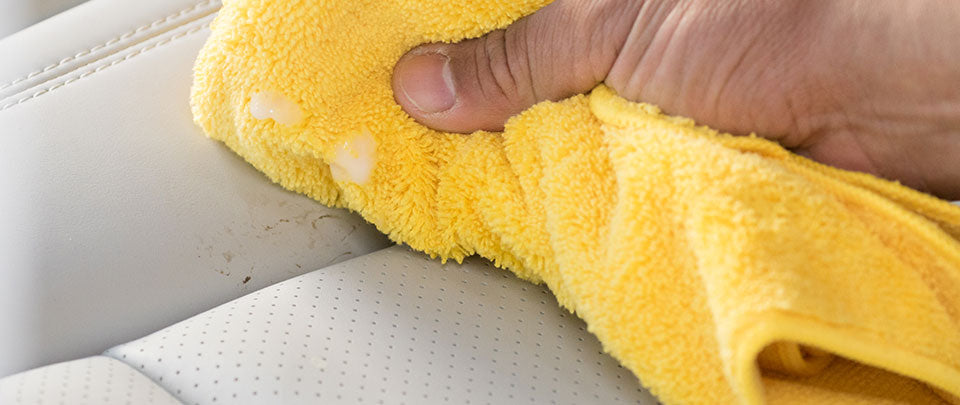
Leather benefits greatly from consistent care, and if not kept clean, dirt and foreign materials will undermine any leather’s natural strength. Leather surfaces in automobiles are exposed to lots of funk and junk, including food and beverages, sweat, automotive chemicals, gross kid stuff, plus everything transferred from your shoes when they bump into a seat or door panel. Those substances soak into leather (it’s natural and it’s got pores) and break it down, so you need to stay ahead of it by keeping leather clean.
A soft sponge or applicator pad, or terry cloth or microfiber towel should be used to apply leather cleaner. Test the cleaner in an inconspicuous area before proceeding (you heard the man – always check what car-care chemicals will do to a surface before they’re applied en masse). Be prepared to repeat the process to help the cleaner get things… cleaner. Because leather needs to keep its supple consistency to be comfortable and strong, any cleaner you use must work gently; you’ll note that many leather-cleaning products are very mild. Mothers® Foaming Leather Wash works well when agitated with a terry cloth or microfiber cloth, and has been tested and proven safe for the most refined, softest surfaces.
Once leather has been cleaned, its pores are at their most open and unprotected. Help leather maintain its innate durability and resistance to UV and environmental abuse by rubbing in leather conditioner after each cleaning. Another option is to use a combination conditioner-cleaner product like Mothers® Leather Care or VLR – Vinyl•Leather•Rubber. These act as an ultra-mild cleaner as well as a conditioner. If your vehicle’s leather is not dirty enough for a dedicated cleaner, but needs a quick spruce-up and protection, your best bet is an all-in-one product like All-In-One Leather Care or VLR.
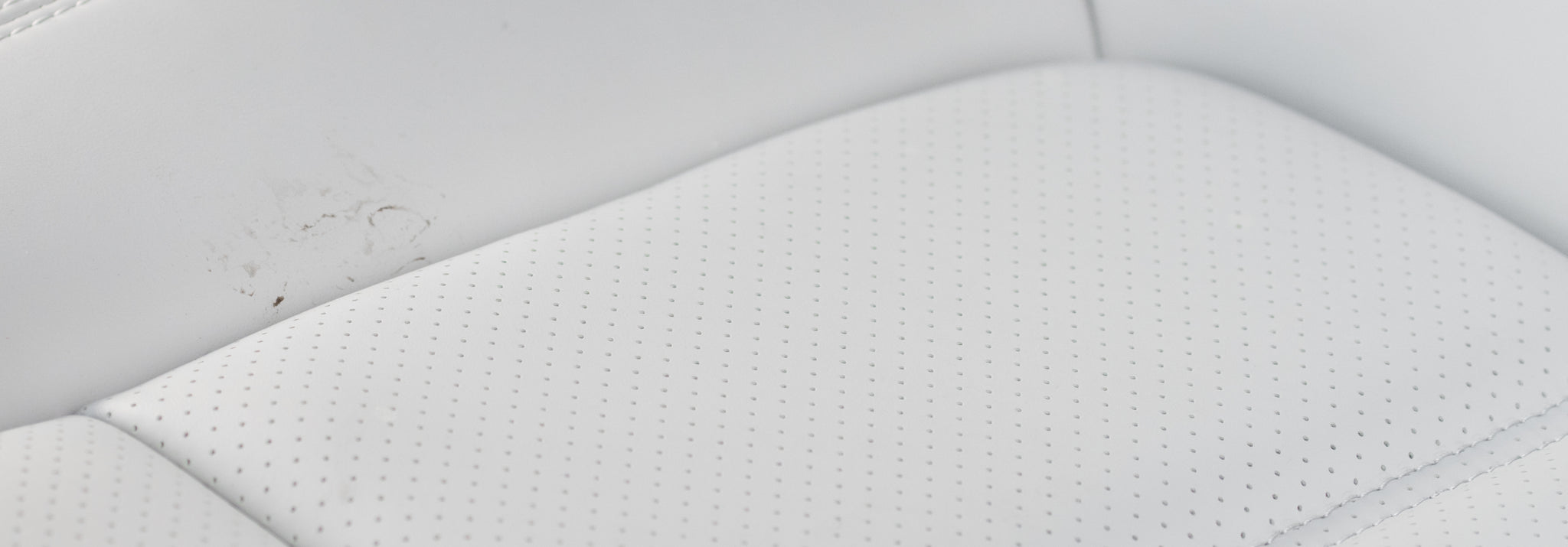
Allowing leather surfaces to dry completely following product application (not the leather-care product, but the leather itself) ensures the product’s goodness is fully absorbed by the leather instead of by your clothes. Cheaper leather care products can be harder for leather to absorb, which, aside from not benefiting the leather, makes it prone to staining what you’re wearing.
Tips for Cleaning and Caring for Leather

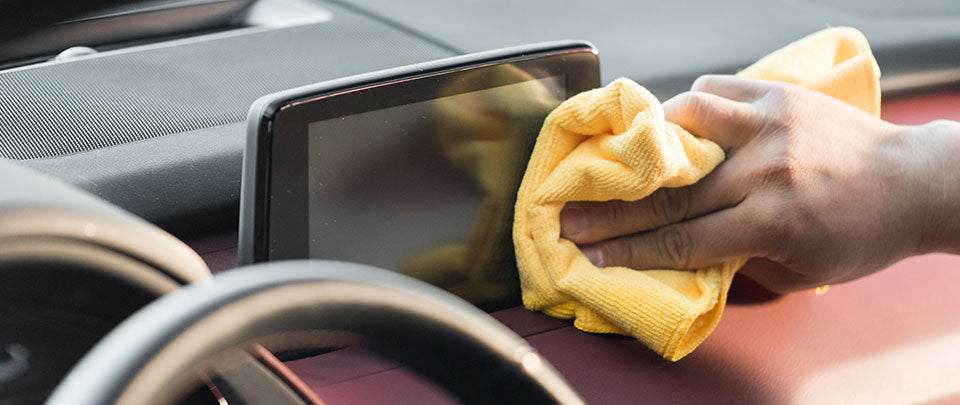
The plastic and vinyl surfaces in your automobile lead a challenging life. Modern automotive interiors incorporate lots of plastic and vinyl parts (pretty parts, minor parts, structural parts, etc), but because many automotorists regard “plastic” as an indestructible surface that will last forever, these parts are routinely neglected. To protect these essential plastic bits – the dashboard, gauge-cluster lenses, dome lights, shiny plastic molding, door and seat trim, plus countless other plastic parts – you’ll need to do some regular maintenance.
Soft Versus Hard Plastic – They’re Not the Same
It’s important to know what types of plastic you’re cleaning, and what car-care products you’re using to do it. If the plastic is shiny/glossy, hard, clear or smooth, use a plastic polish with an ultra-soft applicator pad, terry cloth or microfiber towel.
If the plastic you’re working on has a matte finish, is soft, or its texture or consistency is more like leather or vinyl than Lexan or glass, use a protectant or other penetrating rubber-care product. When applying penetrating chemicals, do so by hand using a terry cloth or microfiber towel, or a clean applicator.
Dashboard and Console Plastics: Cleaning and Maintenance
The #1 cleaning chore on most dashboards, center consoles and door panels will be dusting. Easy, right? Speed Interior Detailer is specially designed to remove dust, dirt, oil and fingerprints and is safe for electronics and touch screens. Avoid putting vinyl protectant on this towel, as it may get on the wrong kinds of plastics – you can detail each surface as necessary once it’s been dusted.
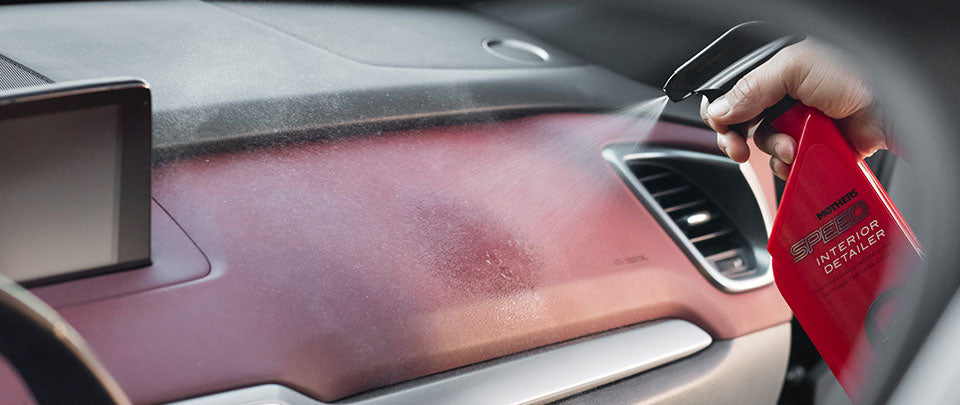
The hard part of dusting is getting dirt and fluff out of the inevitable nooks and crannies that infest most automotive interiors. Find yourself a set of Mothers® Detail Brushes – they’re narrow, angled brushes with specialized splintered bristles that do a superior job grabbing dust. Your collection of detailing brushes will be handy when chasing built-up funk along the edges of your dashboard and door panels.
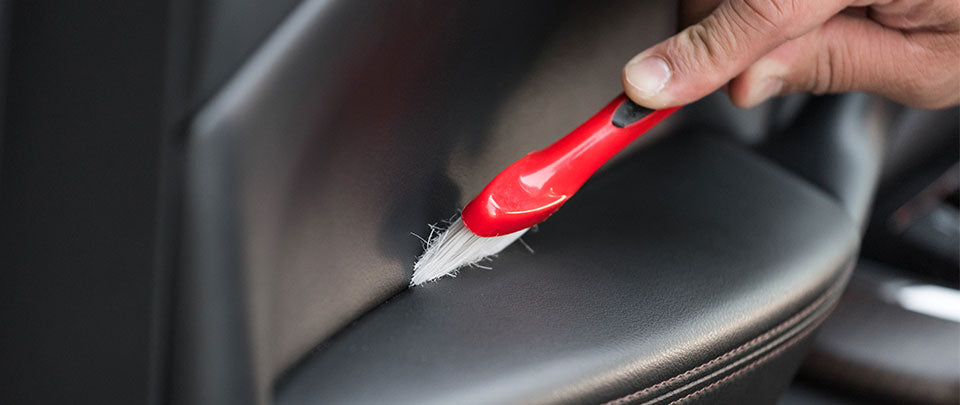
Treating Cabin Interior Surfaces for Appearance and Durability
Most dashboards respond well to a dedicated, penetrating low-shine dressing like Mothers® Protectant. The regular use of high-quality preserving agent like these will go a long way to lengthening the life of your dash and interior. They will also make cleaning easier, because the interior surfaces can better resist the penetration of dirt and residue. It’s always smart to first test the product to see if it’ll alter material coloration.
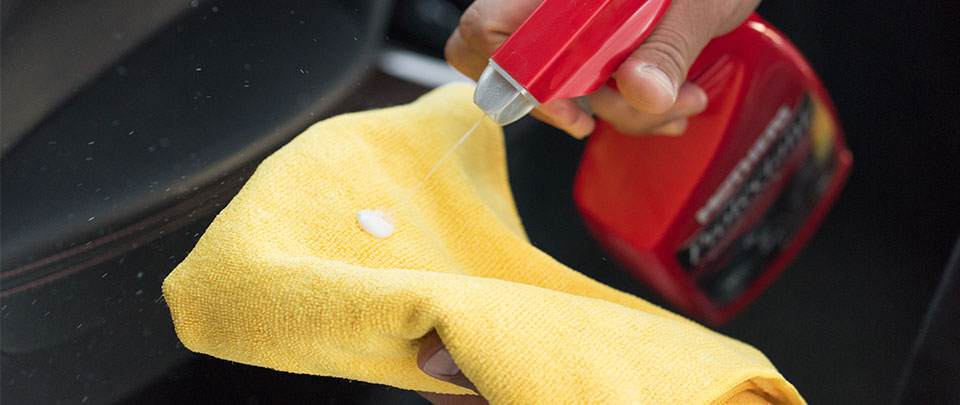
Apply the protectant to microfiber or terry cloth (avoiding overspray). A good dressing like Protectant won’t change the color or sheen of interior plastics, it’ll only accentuate their original appearance.
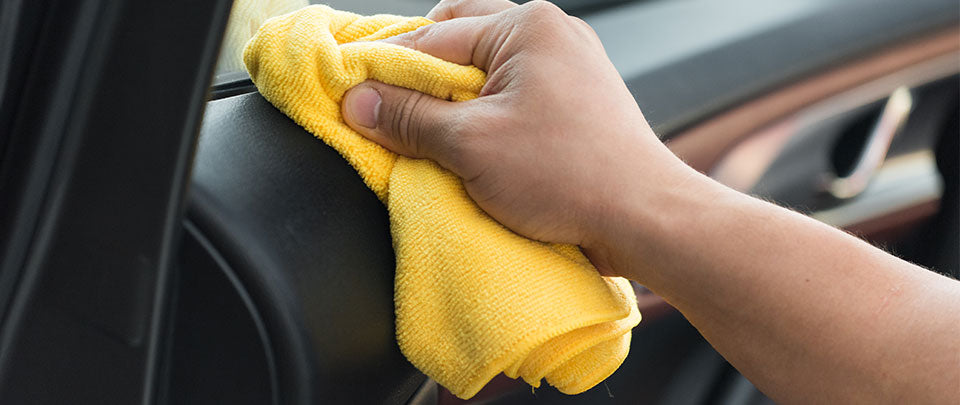
Wipe it on sparingly, and pay attention to an even application to ensure even coloration. Spraying protectant directly on the dash can cause overprotected, darkened splotches. Buff off any excess after a minute or three have passed. Use a protecting agent with the capacity to remove some dirt (such as Mothers® VLR) when there’s some ground-in funk on the surface being dressed.
As mentioned elsewhere, hard plastics like the gauge cover, overhead light lens and shiny parts don’t benefit from rubber-only protectants, and need a plastic polish to be detailed right (such as Mothers® Plastic Polish or PowerPlastic 4Lights®). Plastic-specific polishes are applied in the same manner as paint or metal polish – rubbed on, wiped off (gently!) with an ultra-soft applicator pad like Mothers® Applicator Pads – but are not interchangeable with metal and paint polishes. Mothers® Mag & Aluminum Polish can be used for very yellowed/hazed plastics, but be sure to treat so-polished hard plastics with a plastic polish after using Mag & Aluminum Polish so the plastic will get the plastic-preserving chemicals it needs to last. One important caveat, this technique should never be used on painted plastics. Approach the care of any dash or interior surface with care – these parts are not as hardy as exterior surfaces.

Thoughts About Cleaning the Dash and Console

Automotive glass and mirrors get cleaned all the time, but are you doing it correctly? Are your towels tint-safe? Lint-free? Is your glass cleaner safe for automotive materials? Do you spray the cleaner into corners, or protect the seals by spraying it on the towel? Glass ain’t complicated, but you need to follow the rules.

Don’t use ammonia-based cleaners. Ammonia can mess up the tinted side of a window (tint is a plastic material that must be protected), discolor other vulnerable surfaces in your interior and degrade rubber seals.
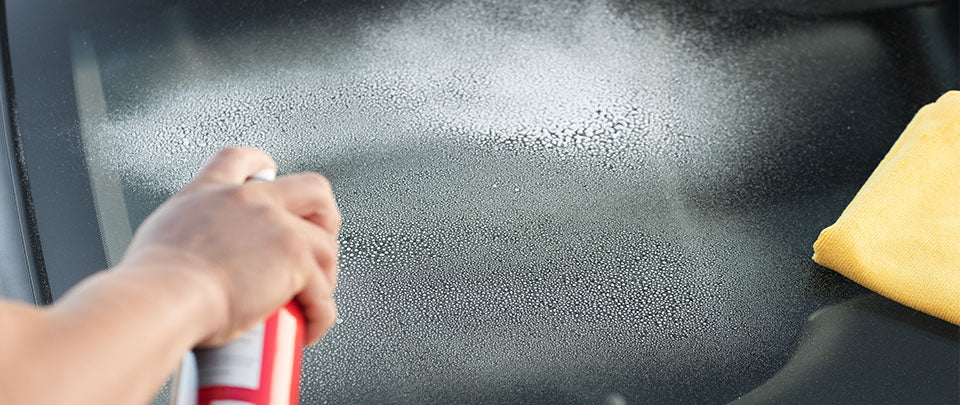
Once you find a good glass cleaner, you’ll want to use it in the home as well as on your windshield. Keep plenty of microfiber towels around to make a quick job of buggy and splattered-up glass. Proper auto-glass cleaners are mild, contain no ammonia, and are made to remove all kinds of auto gunk, such as tobacco smoke haze, airborne grime, outgases from interior plastics, and general gets-on-the-glass stuff like bird poop, bug parts and flying road stickiness. Mothers® Speed Foaming Glass & Screen, and Revision® Glass + Surface Cleaner are exactly those kinds of cleaners.

Now, take a look at the towel you plan to use. Cotton or Microfiber? Good. Paper towels? Possibly scratchy – don’t use them on interior glass surfaces. On the outside, glass is pretty durable, which is why you’ve seen folks use a razor blade to scrape off a decal or an ice scraper to scrape off… ice… Protect the tint on your glass (it’s on the inside) from scratches by only touching it with the softest materials. In tight spots, and to keep glass cleaner off the dash, paint and seals, spray it on the towel.
Specialized Technique for Removing Water Spots and Etching
There isn’t much on most glass to protect the exterior surfaces from environmental infectication, and when water or other funk sits on it, the glass can develop etching and water spots that glass cleaner can’t remove. Mothers® Water Spot Remover (for glass) can, as well as Mothers® Chrome Polish. Apply these specialized polishes in the same fashion as you would automotive wax. These polishes are very effective at significantly reducing and/or removing water spots and minor etching in exterior glass surfaces, however, it will take repeated applications. If this process doesn’t work, that glass needs professional polishing. Avoid using these polishes on tinted glass surfaces, and keep them away from trim, paint, fabrics or poly-based materials.
Thoughts On Glass Cleaning